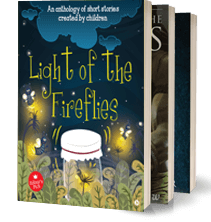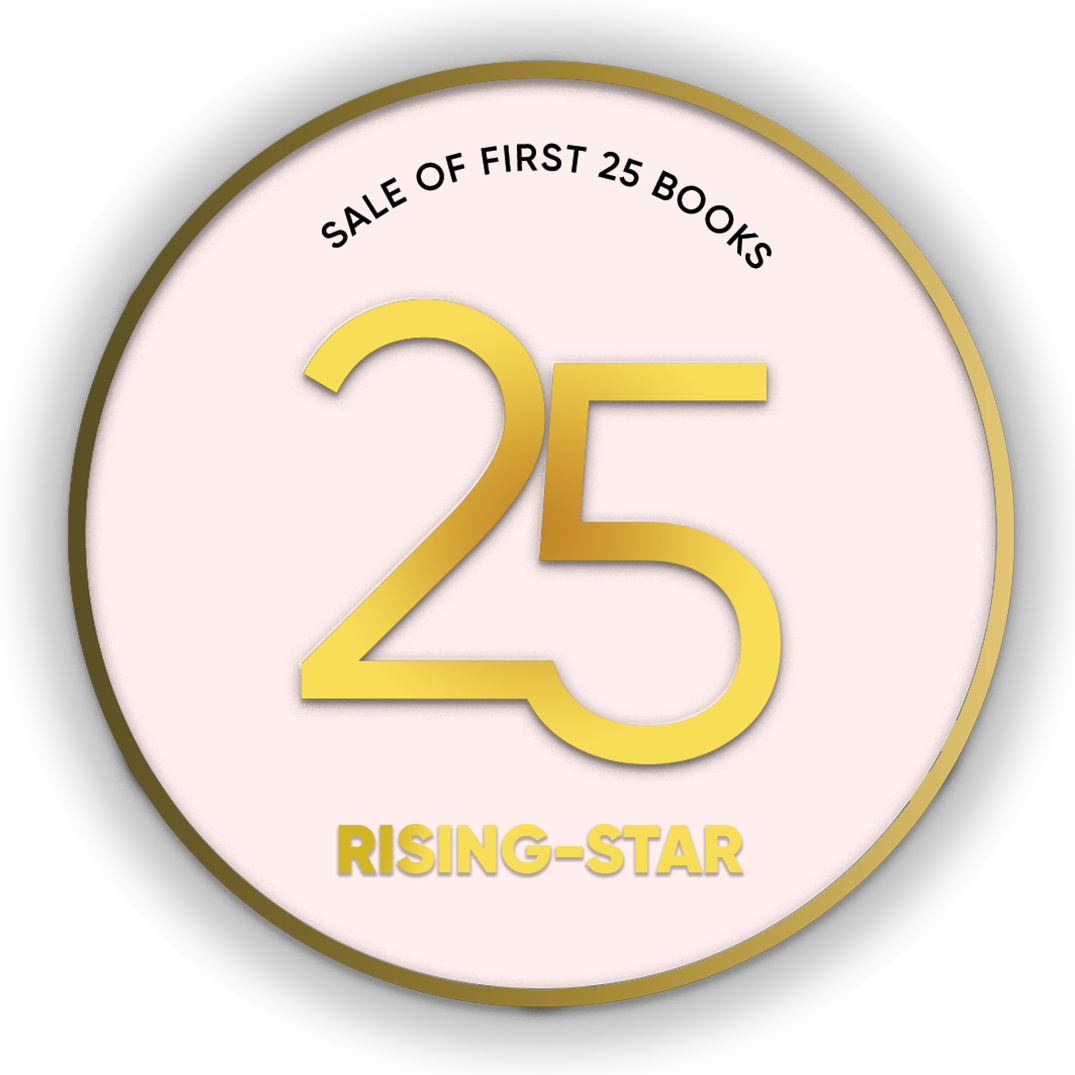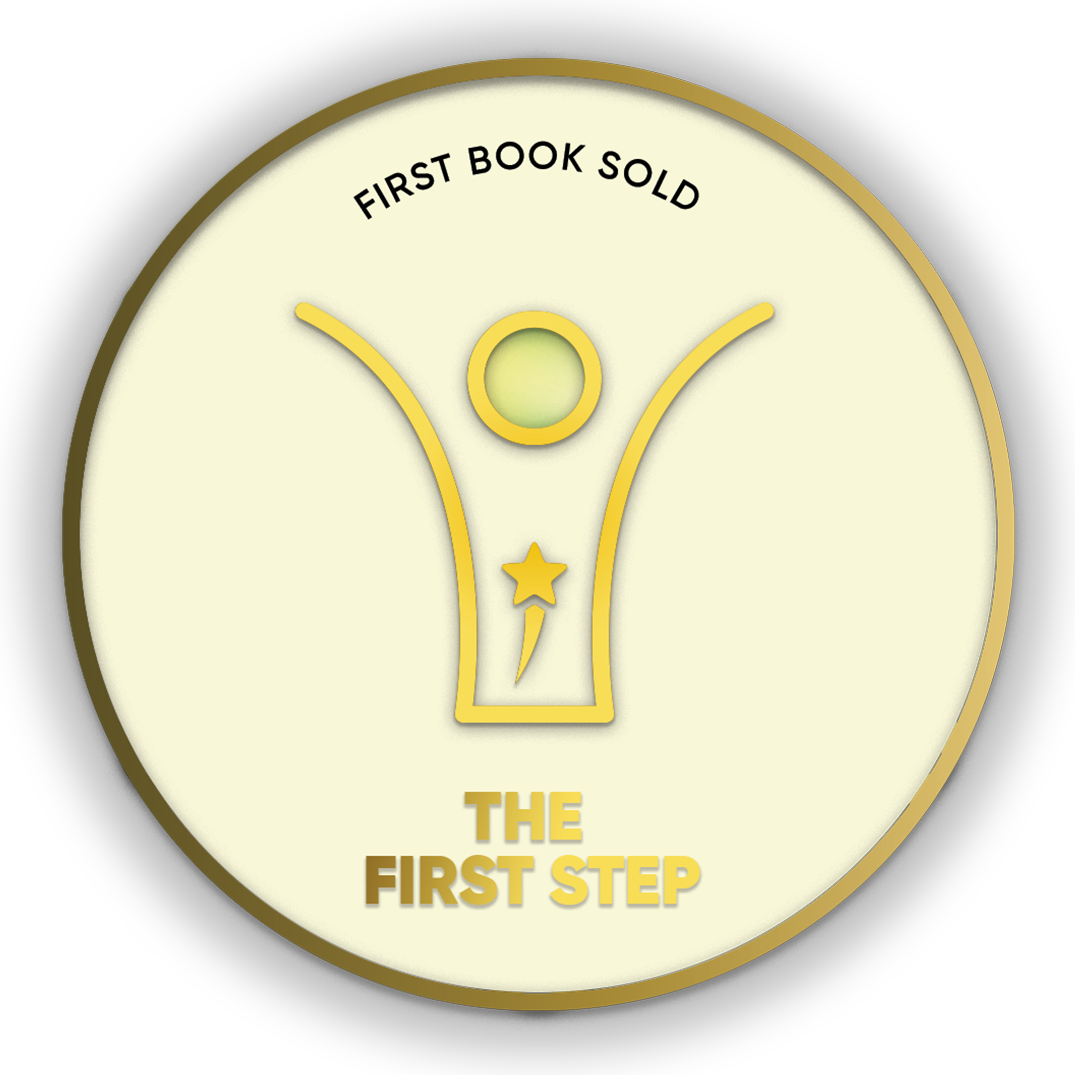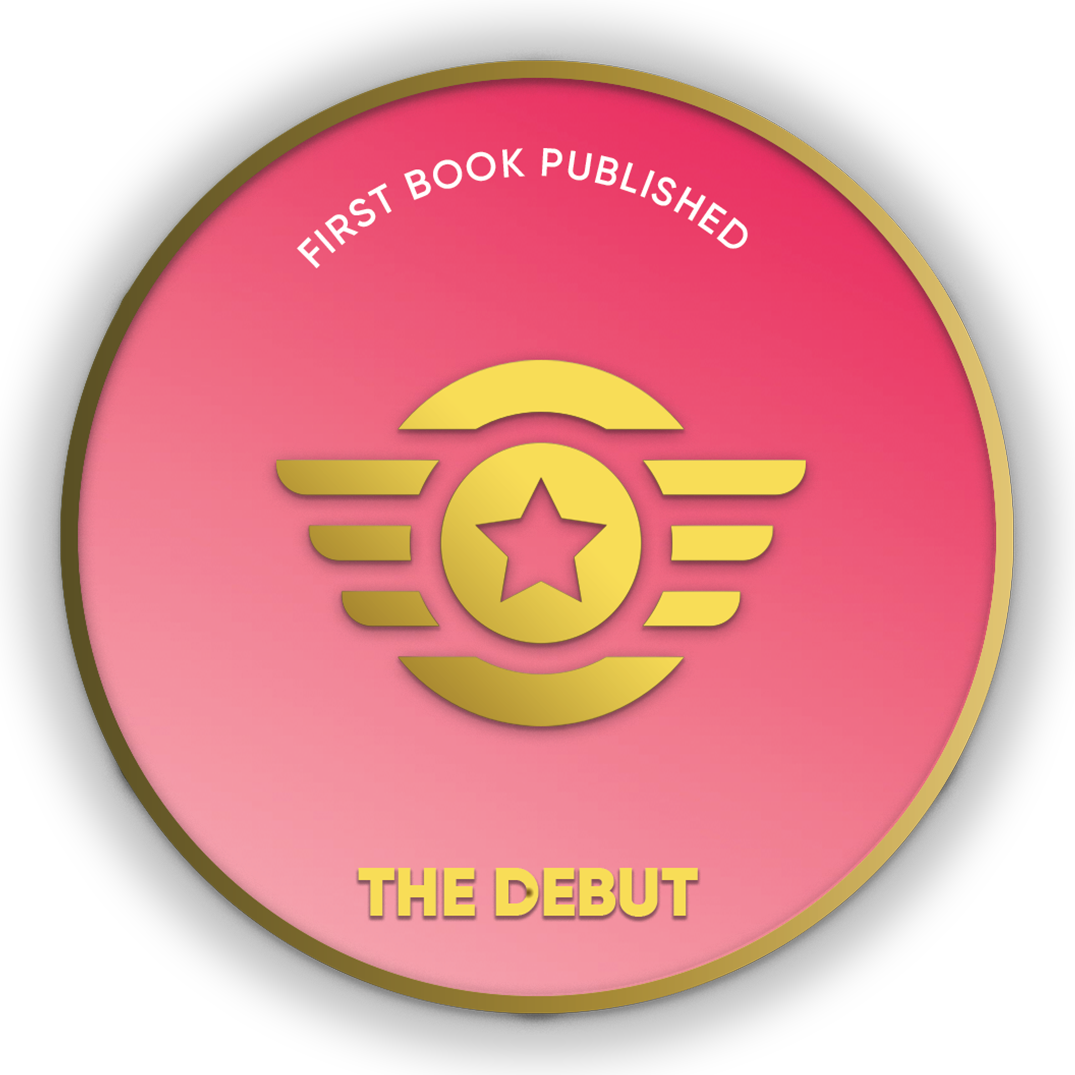
- Discover books
- For Writers
-
For Writers
-
Indie Author Championship
-
Challenges
Writing Contests
- Get Started

"It was a wonderful experience interacting with you and appreciate the way you have planned and executed the whole publication process within the agreed timelines.”
Subrat SaurabhAuthor of Kuch Woh Pal -
Crop your profile image

An Anthology of Contemporary British and American Verse
Books by V.R.Badiger And Renuka Janbow
This anthology of Contemporary British & American Verse is very comprehensive and it excels all previous anthologies in this field. It begins from W.B.Yeats (b.1865), the Nobel Prize winner, and the first of the modern poets. We also have included the American poets who were born after 1950. Nearly there are two hundred poems. Of course, there are no references but biographical sketches help the students and teachers to know more about the life of the po
This anthology of Contemporary British & American Verse is very comprehensive and it excels all previous anthologies in this field. It begins from W.B.Yeats (b.1865), the Nobel Prize winner, and the first of the modern poets. We also have included the American poets who were born after 1950. Nearly there are two hundred poems. Of course, there are no references but biographical sketches help the students and teachers to know more about the life of the poets. It is a compulsory textbook in post-graduate and under-graduate classes with British and American papers in the curriculum. For a teacher, teaching poetry with the hard copy in the right hand, would be easier than using the soft copy in the computer or mobile.
Prof V.R. Badiger, emotionally and intellectually involving in the making of this anthology, has done a tremendous work and it is highly praiseworthy. Dr.Renuka Janbow, being scholar, has gone through the text meticulously. It is hoped that the teachers and students of English and American literatures shall be more benefitted by this anthology which covers the poets of the modern, the post-modern and the contemporary period.
An Anthology of Contemporary British and American Verse
Books by V.R.Badiger And Renuka Janbow
This anthology of Contemporary British & American Verse is very comprehensive and it excels all previous anthologies in this field. It begins from W.B.Yeats (b.1865), the Nobel Prize winner, and the first of the modern poets. We also have included the American poets who were born after 1950. Nearly there are two hundred poems. Of course, there are no references but biographical sketches help the students and teachers to know more about the life of the po
This anthology of Contemporary British & American Verse is very comprehensive and it excels all previous anthologies in this field. It begins from W.B.Yeats (b.1865), the Nobel Prize winner, and the first of the modern poets. We also have included the American poets who were born after 1950. Nearly there are two hundred poems. Of course, there are no references but biographical sketches help the students and teachers to know more about the life of the poets. It is a compulsory textbook in post-graduate and under-graduate classes with British and American papers in the curriculum. For a teacher, teaching poetry with the hard copy in the right hand, would be easier than using the soft copy in the computer or mobile.
Prof V.R. Badiger, emotionally and intellectually involving in the making of this anthology, has done a tremendous work and it is highly praiseworthy. Dr.Renuka Janbow, being scholar, has gone through the text meticulously. It is hoped that the teachers and students of English and American literatures shall be more benefitted by this anthology which covers the poets of the modern, the post-modern and the contemporary period.
An Anthology of Post-Colonial Poetry
Books by V. R. Badiger, Akkamahadevi P.
This anthology is a great improvement upon earlier version which, by now, is old and outdated. A revised new one the dire need of hour for teaching of the colonial and post-colonial poetry to the graduate and post-graduate students in our country. Many times, they do not understand seeing the name of the poet whether the particular person is a male or female. In that case, it is necessary to clarify-so, the photos of 81 poets and poetesses are included with th
This anthology is a great improvement upon earlier version which, by now, is old and outdated. A revised new one the dire need of hour for teaching of the colonial and post-colonial poetry to the graduate and post-graduate students in our country. Many times, they do not understand seeing the name of the poet whether the particular person is a male or female. In that case, it is necessary to clarify-so, the photos of 81 poets and poetesses are included with the biographical details. The best of the poems are chosen for the silent/loud reading and enjoying the rhythm, rhymes and the meaning of the poetry.
An Anthology of Post-Colonial Poetry
Books by V. R. Badiger, Akkamahadevi P.
This anthology is a great improvement upon earlier version which, by now, is old and outdated. A revised new one the dire need of hour for teaching of the colonial and post-colonial poetry to the graduate and post-graduate students in our country. Many times, they do not understand seeing the name of the poet whether the particular person is a male or female. In that case, it is necessary to clarify-so, the photos of 81 poets and poetesses are included with th
This anthology is a great improvement upon earlier version which, by now, is old and outdated. A revised new one the dire need of hour for teaching of the colonial and post-colonial poetry to the graduate and post-graduate students in our country. Many times, they do not understand seeing the name of the poet whether the particular person is a male or female. In that case, it is necessary to clarify-so, the photos of 81 poets and poetesses are included with the biographical details. The best of the poems are chosen for the silent/loud reading and enjoying the rhythm, rhymes and the meaning of the poetry.
THE WIDOW REMARRIAGE - 3
Books by V.r.badiger
The Widow Remarriage is revised and reedited version of Col.P.M. Taylor’s work About the Tara –A Tale of Maratha Brahmin Widow is revised and reedited version of Col.P.M. Taylor’s work with same title, published in 1879 in England. The original historical romance is of 93 chapters and 530 pages in crown-size print. The Widow Remarriage Act was passed in 1856 in spite of protests by the upper caste Brahmin caste people.
The
The Widow Remarriage is revised and reedited version of Col.P.M. Taylor’s work About the Tara –A Tale of Maratha Brahmin Widow is revised and reedited version of Col.P.M. Taylor’s work with same title, published in 1879 in England. The original historical romance is of 93 chapters and 530 pages in crown-size print. The Widow Remarriage Act was passed in 1856 in spite of protests by the upper caste Brahmin caste people.
The long story is told by the ‘omniscient’ narrator in Fieldingsque manner. The two strands of the narrative are -one of Tara, the high caste Brahmin widow and the other of Rajah Shivaji’s assassination of Afzul Khan, the military officer serving the Adil Shah dynasty of Bijapur Kingdom. Of the two only Tara’s story is chosen and modified to suit the interest of the contemporary readers, highlighting the progressive dimension of the widow remarriage of a Hindu widow and Fazil Khan, an officer who falls in love with her and marries after the siege of Sholapur by the forces of Bijapur. After marriage, she is renamed by groom’s party as ‘Ayesha’ but she chooses to remain Tara for him, retaining her Hindu identity.
It is great story of suffering, anxiety, sorrow, frustration and love.
THE WIDOW REMARRIAGE -1
Books by V.r.badiger
The Widow Remarriage is revised and reedited version of Col.P.M. Taylor’s work About the Tara –A Tale of Maratha Brahmin Widow is revised and reedited version of Col.P.M. Taylor’s work with same title, published in 1879 in England. The original historical romance is of 93 chapters and 530 pages in crown-size print. The Widow Remarriage Act was passed in 1856 in spite of protests by the upper caste Brahmin caste people.
The
The Widow Remarriage is revised and reedited version of Col.P.M. Taylor’s work About the Tara –A Tale of Maratha Brahmin Widow is revised and reedited version of Col.P.M. Taylor’s work with same title, published in 1879 in England. The original historical romance is of 93 chapters and 530 pages in crown-size print. The Widow Remarriage Act was passed in 1856 in spite of protests by the upper caste Brahmin caste people.
The long story is told by the ‘omniscient’ narrator in Fieldingsque manner. The two strands of the narrative are -one of Tara, the high caste Brahmin widow and the other of Rajah Shivaji’s assassination of Afzul Khan, the military officer serving the Adil Shah dynasty of Bijapur Kingdom. Of the two only Tara’s story is chosen and modified to suit the interest of the contemporary readers, highlighting the progressive dimension of the widow remarriage of a Hindu widow and Fazil Khan, an officer who falls in love with her and marries after the siege of Sholapur by the forces of Bijapur. After marriage, she is renamed by groom’s party as ‘Ayesha’ but she chooses to remain Tara for him, retaining her Hindu identity.
It is great story of suffering, anxiety, sorrow, frustration and love.
THE WIDOW REMARRIAGE - 2
Books by V.r.badiger
The Widow Remarriage is revised and reedited version of Col.P.M. Taylor’s work About the Tara –A Tale of Maratha Brahmin Widow is revised and reedited version of Col.P.M. Taylor’s work with same title, published in 1879 in England. The original historical romance is of 93 chapters and 530 pages in crown-size print. The Widow Remarriage Act was passed in 1856 in spite of protests by the upper caste Brahmin caste people.
The
The Widow Remarriage is revised and reedited version of Col.P.M. Taylor’s work About the Tara –A Tale of Maratha Brahmin Widow is revised and reedited version of Col.P.M. Taylor’s work with same title, published in 1879 in England. The original historical romance is of 93 chapters and 530 pages in crown-size print. The Widow Remarriage Act was passed in 1856 in spite of protests by the upper caste Brahmin caste people.
The long story is told by the ‘omniscient’ narrator in Fieldingsque manner. The two strands of the narrative are -one of Tara, the high caste Brahmin widow and the other of Rajah Shivaji’s assassination of Afzul Khan, the military officer serving the Adil Shah dynasty of Bijapur Kingdom. Of the two only Tara’s story is chosen and modified to suit the interest of the contemporary readers, highlighting the progressive dimension of the widow remarriage of a Hindu widow and Fazil Khan, an officer who falls in love with her and marries after the siege of Sholapur by the forces of Bijapur. After marriage, she is renamed by groom’s party as ‘Ayesha’ but she chooses to remain Tara for him, retaining her Hindu identity.
It is great story of suffering, anxiety, sorrow, frustration and love.
THE NOBEL QUEEN
Books by V.r.badiger
Chand Bibi is a great heroic female figure in the history of South India. Being a widow, she ruled over the kingdom of Bijapur for a decade after the death of her husband Ali Adil Shah I. She is known as Dowager Queen. She is rare woman of immense courage, beauty, intelligence and talent of music etc. She lived a noble and selfless life as she had no children of her won to fight for. After returning to Ahemdnagar, she was unfortunately killed by Humeed Khan, w
Chand Bibi is a great heroic female figure in the history of South India. Being a widow, she ruled over the kingdom of Bijapur for a decade after the death of her husband Ali Adil Shah I. She is known as Dowager Queen. She is rare woman of immense courage, beauty, intelligence and talent of music etc. She lived a noble and selfless life as she had no children of her won to fight for. After returning to Ahemdnagar, she was unfortunately killed by Humeed Khan, whom she loved and suspected as one of her close military associates.

Are you sure you want to close this?
You might lose all unsaved changes.
Select from one of our global stores to continue
 India
India
 Malaysia
Malaysia
 Singapore
Singapore
 UAE
UAE
Warning Message
The items in your Cart will be deleted, click ok to proceed.


















